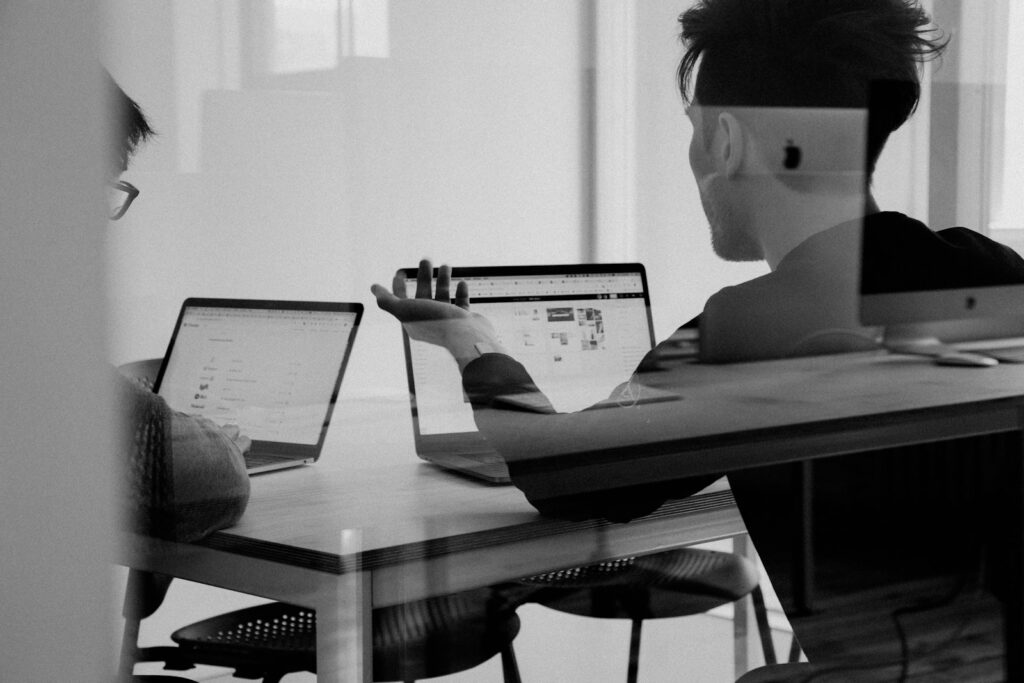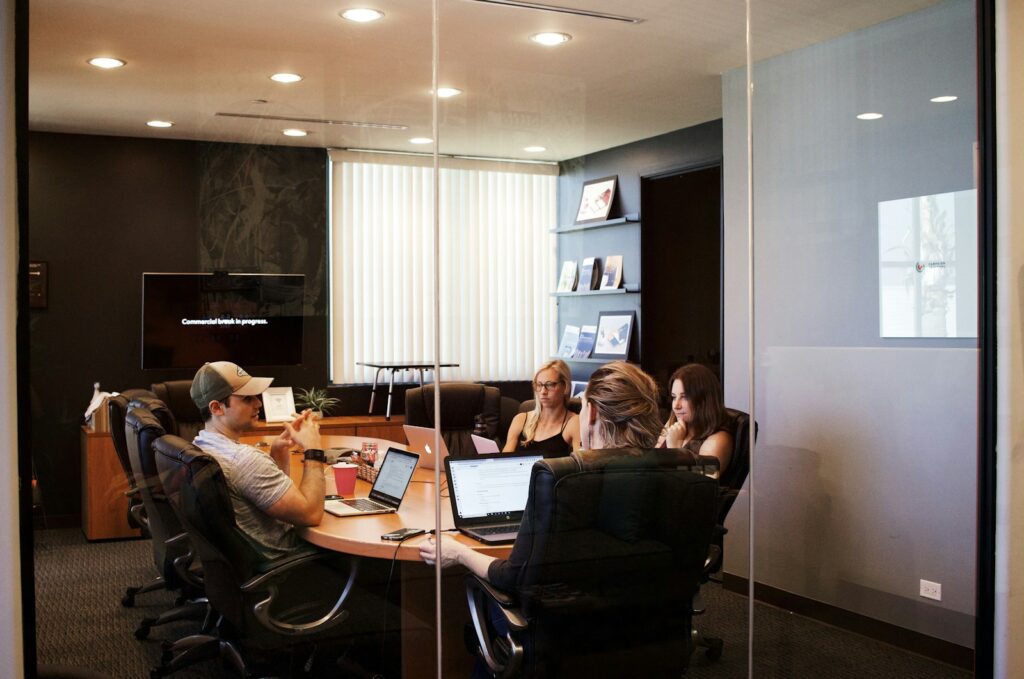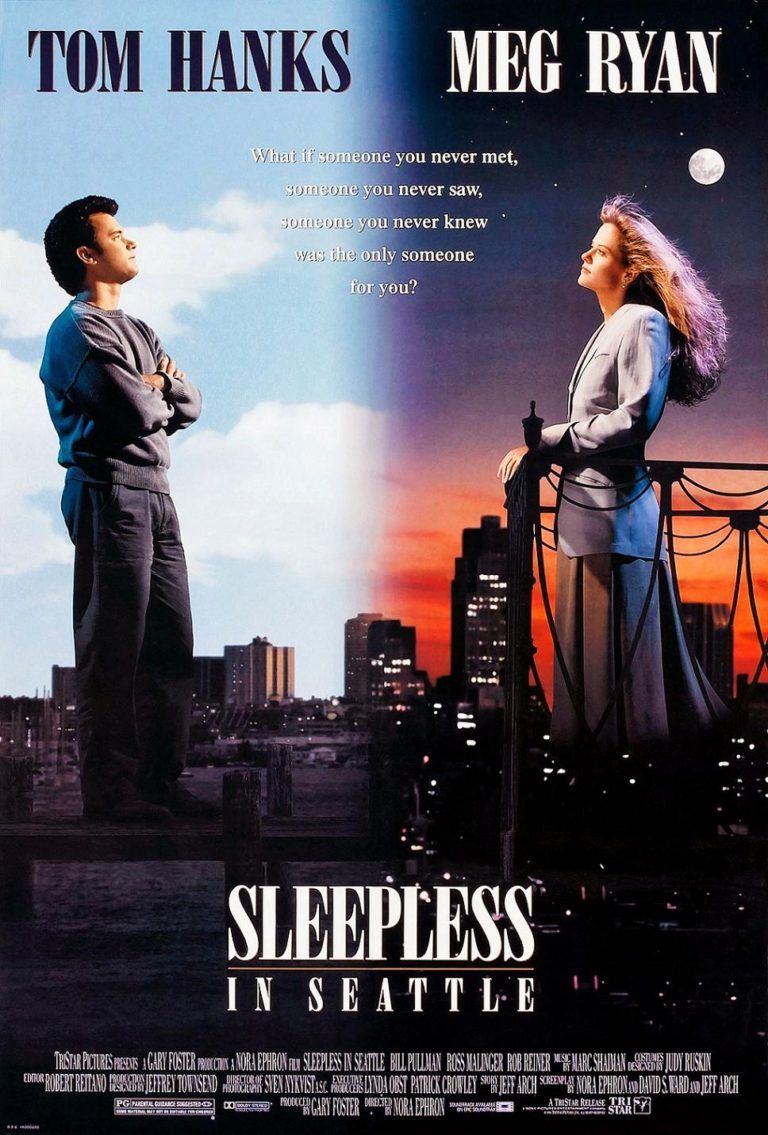
Let’s be real, you probably have a LinkedIn profile. Whether you’re actively hunting for your dream job, subtly stalking former colleagues (we’ve all been there, no judgment!), or just keeping up with industry news, this platform is an undeniable force in our professional lives. It’s more than just an online resume; it’s a living, breathing network that connects over a billion people across the globe. But how much do you really know about the professional powerhouse that started in a living room and grew into a global phenomenon?
This isn’t just about job listings anymore. LinkedIn has evolved dramatically since its inception, facing triumphs, trials, and even a few head-scratching moments along the way. From pioneering new ways to network to grappling with complex data security issues, its journey is packed with fascinating insights that shaped how we interact professionally online today. So, get ready to dive deep into the world of LinkedIn, because you’re about to uncover some seriously cool (and sometimes surprising) facts.
We’re going to walk through some of the pivotal moments and defining features that have made LinkedIn the indispensable tool it is today. You might think you know it all, but trust us, there’s always more to learn about the platform that helps us build our personal brands, land incredible opportunities, and stay connected in an ever-changing professional landscape. Let’s roll!

1. **The Big Idea: LinkedIn’s Birth & Early Vision**Every giant starts somewhere small, and for LinkedIn, that somewhere was a living room. Picture this: December 2002. Reid Hoffman and a crack team of founding members, including folks from PayPal and Socialnet.com like Allen Blue and Eric Ly, decided to launch something truly groundbreaking. Their vision? An American business and employment-oriented social networking service, designed primarily for professional networking and career development. It wasn’t just about job searching; it was about building connections that mattered.
Launched officially on May 5, 2003, LinkedIn quickly caught the eye of big players in the venture capital world. Firms like Sequoia Capital, Greylock, and Bain Capital Ventures saw the potential in creating a dedicated space for professionals. These early investments were crucial, fueling the platform’s initial growth and helping it lay the groundwork for what would become a global professional staple. It was clear from the start that this wasn’t just another social site; it was building the digital infrastructure for careers.
The core idea was simple yet revolutionary: allow jobseekers to post their CVs and employers to post their job listings, creating a centralized hub where talent and opportunity could meet. But it went further, enabling users to invite others to become connections, regardless of whether they were already members. This open invitation system was key to rapidly expanding the network, fostering a sense of community and opening doors that previously remained shut in the professional world.

2. **From Zero to 10 Million: Surging Growth & Global Footprint**Growth wasn’t just steady for LinkedIn; it was explosive! By August 2004, the platform proudly announced it had reached its first major milestone: 1 million users. This wasn’t just a number; it was a testament to the pent-up demand for a professional online space. The word was spreading, and professionals were quickly recognizing the value of having their network just a click away.
The momentum continued, and by April 2007, LinkedIn boasted an impressive 10 million users. This rapid expansion wasn’t just domestic; it signaled a global appetite for professional networking. The platform responded by opening offices around the world, making its presence known in key international markets like India, Australia, and Ireland. It was a clear sign that LinkedIn was no longer just a Silicon Valley startup, but a burgeoning international player.
This global outreach wasn’t just about physical offices; it was about understanding diverse professional landscapes. For instance, in India, where operations began in 2009, a significant part of the first year was dedicated to understanding local professionals and educating members on how to leverage LinkedIn for career development. This tailored approach helped cement its status as a truly global professional network, setting the stage for even greater expansion and user adoption in the years to come.

3. **Cracking the Code: Profitability & the Road to IPO Glory**While user growth was soaring, a key business challenge for any startup is reaching profitability. LinkedIn hit a major milestone in March 2006, achieving its first month of profitability. This wasn’t just a fleeting success; it demonstrated a sustainable business model capable of generating revenue. This early financial success provided a strong foundation for future investments and expansion, proving that professional networking could indeed be a lucrative venture.
With a solid financial footing and continuous investment from firms like Tiger Global Management LLC, which injected $20 million in 2010 at a valuation of approximately $2 billion, LinkedIn was on a clear path to go public. In January 2011, the company filed for an initial public offering (IPO), a highly anticipated move in the tech world. This filing created a buzz, with investors eager to get a piece of the rapidly growing professional networking market.
On May 19, 2011, LinkedIn traded its first shares on the New York Stock Exchange under the symbol “LNKD” at $45 per share. The market’s excitement was palpable, as shares soared by as much as 171% on their first day, closing at an astonishing $94.25 – more than 109% above the IPO price! This incredible debut solidified LinkedIn’s position as a major player in the tech industry and provided significant capital for continued innovation and growth, showcasing the immense value placed on its unique professional service.

4. **Beyond Connections: The Evolution of User Profiles & Networking**At its heart, LinkedIn is all about the user profile. Think of it as your dynamic, living curriculum vitae, meticulously detailing your work experience, education, training, and skills, usually topped off with a professional photo. But it’s not just a static document; it’s designed to be a comprehensive showcase of your professional journey, constantly updated and refined to reflect your career trajectory. Employers, in turn, can leverage this rich data to post jobs and search for potential candidates, making it a two-way street for opportunity.
The magic really happens with connections. LinkedIn enables members to forge “connections” with each other, mirroring real-world professional relationships. The system is layered: your direct contacts are “first-degree connections.” Their connections become your “second-degree connections,” and so on, extending to “third-degree connections.” This intricate web allows users to tap into an expansive network, finding people and business opportunities recommended by those already in their trusted circle.
This “gated-access approach” is quite clever. If you want to reach someone outside your immediate circle, you can ask a mutual first-degree connection for an introduction. This strategy is designed to build trust among users, ensuring interactions are more meaningful and less akin to cold outreach. It’s a deliberate design choice that fosters a more respectful and professional environment, distinguishing LinkedIn from more casual social media platforms and reinforcing its role as a premier professional tool.

5. **Making Waves: How We Connect, Share, and Endorse Skills**Interacting on LinkedIn has come a long way from just sending connection requests. Today, the platform offers a multitude of ways for professionals to engage with each other, fostering a vibrant and dynamic community. Connections can interact by “liking” posts, sending “congratulations” for milestones like birthdays or new jobs, and engaging in direct messaging. These simple yet effective tools help maintain relationships and keep conversations flowing within your professional network.
But the engagement goes deeper! Users can share their insights and expertise by writing posts and articles directly within the LinkedIn platform, distributing their content to their network and potentially a wider audience. The introduction of LinkedIn Video also allows members to share visual content, complete with text and filters, adding another dimension to professional storytelling. These features transform the platform from a static directory into a rich publishing hub, enabling users to build their thought leadership and share valuable industry perspectives.
A particularly popular — and sometimes debated — feature is the “endorsement” system, launched in September 2012. This allows users to endorse each other’s skills, ostensibly validating their expertise. However, it has faced criticism for lacking a mechanism to flag anything other than positive content, and for algorithms that sometimes solicit endorsements for non-existent skills. While a great way to quickly highlight strengths, LinkedIn itself acknowledged in October 2016 that “it really does matter who endorsed you,” beginning to highlight endorsements from “coworkers and other mutual connections” to add more credibility to the feature.

6. **The Ultimate Career Cheat Sheet: How LinkedIn Powers Personal Branding**In today’s competitive professional world, personal branding isn’t just a buzzword – it’s a necessity. And guess what? LinkedIn has become the absolute go-to for it! As Sandra Long puts it, personal branding is about “actively managing one’s image and unique value” to strategically position yourself for career opportunities. LinkedIn has truly transformed from a simple job board into a dynamic social network where users can actively sculpt and project their professional identity, showcasing their expertise to a global audience.
Career coach Pamela Green describes a personal brand as the “emotional experience you want people to have as a result of interacting with you,” and your LinkedIn profile is a crucial part of that. It’s not just about listing your past jobs; it’s about curating a public-facing persona that highlights your skills, achievements, and professional passions. LinkedIn empowers professionals to build significant exposure for their brand, not just within its walls but across the wider internet, making you discoverable by recruiters, clients, and collaborators.
LinkedIn even offers a clever “Profile Strength Meter” that encourages users to fill out their profiles comprehensively, which in turn optimizes their visibility in search engines. Belonging to professional groups on the site further strengthens a user’s presence, creating more touchpoints for their brand. Some users even go the extra mile, hiring professional photographers for their profile photos or adding video presentations to their profiles, truly leveraging all the platform’s capabilities. It’s no wonder a cottage industry of consultants has popped up, dedicated solely to helping users master their LinkedIn presence – a testament to its profound impact on personal branding!

7. **Your Next Job Awaits: LinkedIn as the Premier Job-Seeking Powerhouse**If you’re on the hunt for a new gig, or even just keeping an eye on the market, LinkedIn is practically synonymous with job seeking. Jack Meyer aptly described it as the “premier digital platform” for professionals to network online, and the numbers back him up. In Australia, for example, a staggering ten million out of twelve million working professionals are on LinkedIn, meaning your “future employer is probably on the site,” according to Anastasia Santoreneos. Those are some compelling odds!
This isn’t just about passive browsing; LinkedIn is actively facilitating career moves. One estimate, based on worldwide figures, suggests that an incredible 122 million users have landed job interviews via LinkedIn, and a whopping 35 million have been hired through a LinkedIn online connection. These aren’t just statistics; they represent countless lives transformed and careers launched, all thanks to the platform’s robust capabilities in connecting talent with opportunity.
Beyond direct job applications, LinkedIn offers invaluable tools for research. Users can dive deep into companies, non-profit organizations, and government agencies they might be interested in. A quick search can reveal fascinating data, such as the ratio of female to male employees, the most common titles within a company, and even a list of current and former employees. In July 2011, LinkedIn even introduced an “Apply with LinkedIn” button, allowing potential employees to use their meticulously crafted LinkedIn profiles as dynamic resumes, streamlining the application process and making job hunting more efficient than ever before.

8. **The Mega-Deal: LinkedIn Becomes Part of Microsoft**Remember that massive tech news that basically broke the internet? Well, in 2016, LinkedIn made headlines globally when it was announced that Microsoft would acquire the professional networking giant. This wasn’t just any acquisition; it was Microsoft’s largest at the time, totaling a staggering $26.2 billion. Imagine that kind of cash changing hands, all for the power of professional connections and data! The deal, an all-cash, debt-financed transaction, truly shook up the tech world and signaled a huge vote of confidence in LinkedIn’s enduring value.
What’s even cooler is that Microsoft wasn’t looking to completely overhaul the platform. Instead, they pledged to let LinkedIn “retain its distinct brand, culture and independence.” Jeff Weiner, who was CEO at the time, remained at the helm, reporting directly to Microsoft CEO Satya Nadella. This approach demonstrated a strategic understanding: Microsoft saw the immense potential in integrating LinkedIn’s robust professional network with its own suite of Office products, envisioning a seamless ecosystem where professional tools and networking converged. It was a strategic masterstroke designed to enhance productivity and connectivity for millions.
And the impact was felt pretty quickly! Soon after the acquisition was finalized in December 2016, a new desktop version of LinkedIn was introduced. This revamp was a direct result of the insights gained from the previously launched mobile app, aiming to create a more consistent and streamlined user experience across all devices. It was clear that Microsoft’s investment wasn’t just about ownership; it was about supercharging LinkedIn’s evolution and reach, bringing fresh perspectives and resources to an already dominant platform.

9. **Mapping the World’s Economy: The Economic Graph Vision**Ever wonder what the *entire* global economy looks like in one giant, interconnected map? Well, LinkedIn CEO Jeff Weiner had a vision back in 2012: to create nothing less than an “economic graph” within a decade. This wasn’t just a fancy buzzword; it was an ambitious goal to build a comprehensive digital map of the world’s economy, charting all its intricate connections. Talk about thinking big!
This isn’t some abstract concept either. The economic graph was designed to be built directly on LinkedIn’s existing platform, leveraging a treasure trove of data. Imagine data nodes representing every company, every job listing, every skill needed for those jobs, all the volunteer opportunities, every educational institution, and every piece of professional content shared. The ultimate aim? To include all the job listings, all the necessary skills, all the professionals who could fill them, and every company—both nonprofit and for-profit—where they work. The sheer scope is mind-boggling!
The ultimate goal behind this massive undertaking is incredibly powerful: to make the world economy and its job market far more efficient through increased transparency. In June 2014, LinkedIn even rolled out its “Galene” search architecture, specifically designed to give users unprecedented access to this economic graph data. This meant more thorough filtering options, allowing for highly specific searches like finding “Engineers with Hadoop experience in Brazil.”
The impact of the economic graph goes beyond just job searches. LinkedIn has actively used this data to publish fascinating blog posts and research on various job market trends. They’ve revealed popular destination cities for recent college graduates, identified areas with high concentrations of specific technology skills, and even mapped common career transitions. They even shared “in-demand” tech skills data with the City of New York for its “Tech Talent Pipeline” project, showing how this grand vision translates into real-world applications for improving workforce development.
Read more about: The Unseen Lens: Unpacking the Global Forces That Gave the 1990s Its Distinctive and Pervasive ‘Look’

10. **The Money Machine: LinkedIn’s Diverse Revenue Streams**So, we’ve talked about how LinkedIn helps you find jobs and build your brand, but how does this professional powerhouse *actually* rake in its billions? Spoiler alert: it’s not just from premium subscriptions (though those certainly help!). LinkedIn has developed a highly diversified revenue model that keeps its engines running and helps it continue to innovate.
Since 2015, a significant chunk of the company’s revenue has come from selling access to valuable information about its members directly to recruiters and sales professionals. Think about it: a platform with over a billion registered members holds a goldmine of professional data, making it an invaluable resource for talent acquisition and business development. Beyond that, LinkedIn also jumped into the advertising game early, launching LinkedIn DirectAds in 2008 and later introducing LinkedIn Ads, its own ad portal for companies to promote their offerings right on the platform.
But the innovation didn’t stop there! In July 2013, they launched the Sponsored Updates ad service, allowing individuals and companies to pay a fee to amplify their content and spread it across the user base – a classic social media revenue strategy. Fast forward to 2018, and we saw the introduction of carousel ads, offering businesses a visually engaging way to showcase products and services. Then there’s Profinder, a marketplace launched in 2017, where freelancers pay a monthly subscription to bid on project proposals from individuals and small businesses, further diversifying income streams. All these efforts culminated in LinkedIn earning an impressive $13.8 billion in revenue in 2022, a substantial leap from $10.3 billion in 2021, showcasing the strength and breadth of its financial strategies.

11. **Strategic Acquisitions: How LinkedIn Built Its Empire, Piece by Piece**LinkedIn didn’t just grow organically; it also supercharged its evolution by *gobbling up* other innovative companies along the way! Like any smart tech giant, strategic acquisitions have been a key part of its growth story, allowing it to integrate new features, expand its capabilities, and stay ahead of the curve. These weren’t just random purchases; each one served a purpose in enhancing the professional user experience.
It all started pretty early. In 2010, LinkedIn made its first acquisition, mspoke, a company focused on adaptive personalization of content, which laid the groundwork for better recommendations on the platform. Soon after, they snapped up ChoiceVendor for social B2B reviews and CardMunch in 2011 to help users scan and import business cards – super practical tools that enhanced basic functionality. These early moves showcased a clear intent to enrich the platform’s utility for everyday professionals.
The acquisitions only got bigger and more strategic. In 2012, they acquired SlideShare for $119 million, giving members a powerful way to discover people through shared content like presentations. Then came Pulse in 2013, transforming LinkedIn into a definitive professional publishing platform. Perhaps one of their most significant moves was the 2015 acquisition of Lynda.com for a whopping $1.5 billion, instantly adding a vast library of e-learning courses for business, technology, software, and creative skills. This firmly cemented LinkedIn’s role not just as a networking site, but as a complete career development hub, constantly integrating new functionalities to serve its vast professional audience.

12. **The Digital Wild West: LinkedIn’s Persistent Security Challenges**Even a global professional powerhouse like LinkedIn isn’t immune to the darker side of the internet. Unfortunately, the platform has faced its fair share of security challenges and incidents over the years, reminding us that no online service is completely bulletproof. These aren’t just minor glitches; some have involved significant breaches of user data, prompting serious concerns about digital safety.
Perhaps the most infamous incident occurred in June 2012, when cryptographic hashes of approximately 6.4 million LinkedIn user passwords were stolen and published online by hackers. This “2012 LinkedIn hack” sent shockwaves through the user base, forcing LinkedIn to ask millions of its members to change their passwords. Security experts were quick to criticize the company for its poor security practices, specifically noting the absence of “salting” in their password file, which could have better protected user data. The repercussions of this breach were long-lasting, with 117 million LinkedIn usernames and passwords (likely from the same 2012 hack) being offered for sale in 2016, highlighting the persistent threat.
More recently, in April 2021, CyberNews claimed that 500 million LinkedIn accounts had leaked online. While LinkedIn investigated and stated it was an aggregation of data from various websites rather than a direct breach of their systems, it still highlighted the vulnerability of user information. Similarly, in June 2021, PrivacySharks reported over 700 million LinkedIn records for sale on a hacker forum. LinkedIn clarified this was scraped data, not a breach, but emphasized that scraping is a clear violation of their Terms of Service. These incidents underscore the ongoing battle LinkedIn faces in protecting its vast trove of professional data from malicious actors.

13. **User Experience: When Good Ideas Go Sideways**We all love a platform that evolves, but sometimes, even the best intentions can lead to a few head-scratching moments for users. LinkedIn, despite its monumental success, has faced its share of criticism regarding certain design choices and user experience controversies. It’s a reminder that getting it right for a billion users is a constantly moving target!
One of the most talked-about features has been the “endorsement” system, launched in September 2012. While seemingly helpful, it quickly drew criticism for being, well, sometimes a bit meaningless. Endorsements weren’t always accurate or given by people truly familiar with a member’s skills, leading to a perception of superficiality. LinkedIn itself acknowledged the issue in October 2016, beginning to highlight endorsements from “coworkers and other mutual connections” to add more credibility, a clear response to user feedback.
Then there was the whole “hijacking e-mail accounts” saga. Remember those persistent invitations to connect with people in your address book, even if you hadn’t explicitly given permission for follow-ups? LinkedIn faced a class-action lawsuit for allegedly sending these “spam” emails, giving the impression that the user themselves had sent them. Though LinkedIn argued it was helping users build their networks, the court ruled against them regarding the two reminder emails, and the company eventually settled the lawsuit in 2015 for $13 million. It was a costly lesson in user consent and privacy!
Adding to the controversies, in late 2013, a significant privacy concern emerged when it was reported that the LinkedIn app was intercepting users’ emails and quietly moving them to LinkedIn servers for full access, effectively using a “man-in-the-middle” attack. This move sparked outrage and serious privacy implications for users. More recently, the introduction of a new desktop version after the Microsoft acquisition, while aiming for consistency, also drew complaints from some users about missing features, slowness, and bugs, proving that even a platform as robust as LinkedIn can stumble when rolling out major updates.

14. **Global Headaches: Regulatory Hurdles and International Bans**For a platform with over a billion members spanning more than 200 countries and territories, navigating the complex web of global regulations is no small feat. LinkedIn, despite its worldwide reach, has encountered significant regulatory hurdles and even outright bans in several key international markets, showcasing the diverse challenges of operating on a truly global scale.
Perhaps the most prominent example of these challenges came in 2016 when Russian authorities blocked access to LinkedIn. The reason? Non-compliance with a 2015 national law requiring social media networks to store Russian citizens’ personal data on servers located within Russia. This ban was a stark reminder of how national data sovereignty laws can impact even the biggest tech players. Following this, Kazakhstan implemented a ban in 2021, and most significantly, China – a massive market – ended LinkedIn operations in October 2021, with local job apps being discontinued in May 2023. These bans often stem from issues around data storage, content censorship, and compliance with local internet regulations, forcing LinkedIn to make tough decisions about its presence in these regions.
Beyond outright bans, LinkedIn also faces ongoing scrutiny over data practices. In September 2024, the platform paused its use of UK user data for AI model training after concerns were raised by the Information Commissioner’s Office (ICO). This came after LinkedIn had quietly opted in users globally for this practice, highlighting the growing global awareness and demand for user control over personal data, especially in the era of AI. The company quickly responded by providing UK users with an opt-out option, demonstrating the immediate impact of regulatory pressure.
And the challenges continue! In November 2024, LinkedIn found itself challenging Australian legislation that sought to ban under-16s from social media platforms. LinkedIn argued that its content was not “interesting and appealing to minors,” positioning itself as a strictly professional network. These ongoing battles across different jurisdictions illustrate the intricate dance LinkedIn must perform to balance its global ambitions with the diverse and ever-evolving legal and cultural landscapes of the world. It’s a wild ride, and this professional powerhouse is constantly adapting, learning, and sometimes, pushing back, to keep connecting the world’s professionals.
So there you have it, a deeper dive into the incredible, and sometimes challenging, journey of LinkedIn. From its visionary beginnings to its colossal Microsoft acquisition, its ambitious economic graph, its clever revenue streams, and even its brushes with security breaches and global regulatory challenges, LinkedIn has consistently redefined what it means to be a professional in the digital age. It’s more than just a place to find a job or post your resume; it’s a dynamic, ever-evolving ecosystem that continues to shape careers, connections, and the very fabric of the global workforce. And as it keeps growing, innovating, and adapting, one thing’s for sure: LinkedIn is here to stay, continuing to empower billions to build their professional futures, one connection at a time. Keep scrolling, keep connecting, and keep building your amazing career journey!




